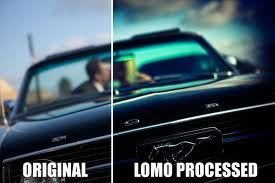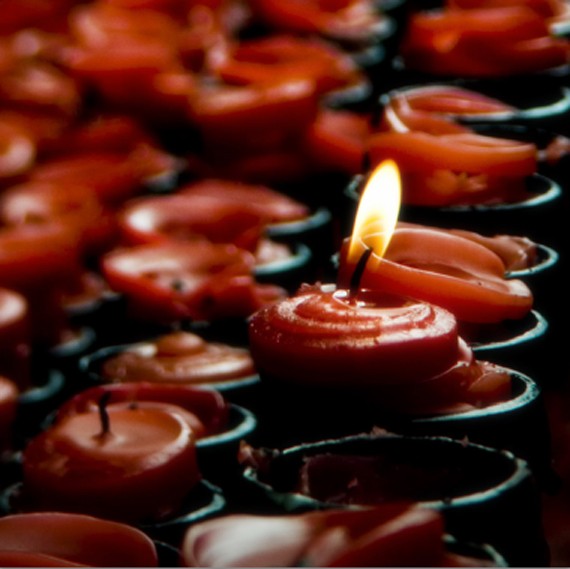How to Achieve Lomography Effects Through Photoshop
Posted on 6/09/2013 by UNITED PHOTO PRESS MAGAZINE
 Lomography is an interesting form of photography that’s on the rise today. It’s kind of like ‘backwards photography’–it’s a plastic toy camera that makes use of film. Because everything is made of plastic (yes, including the lens), the lomo camera does everything it’s not supposed to do: saturated colors, high contrast, off hues, vignettes, blurs, and more. It has developed into an art form because of these unique, ‘bad’ features.
Lomography is an interesting form of photography that’s on the rise today. It’s kind of like ‘backwards photography’–it’s a plastic toy camera that makes use of film. Because everything is made of plastic (yes, including the lens), the lomo camera does everything it’s not supposed to do: saturated colors, high contrast, off hues, vignettes, blurs, and more. It has developed into an art form because of these unique, ‘bad’ features.
However, lomography is expensive and time-consuming. A toy camera can be as cheap as $25 and more than $100. Plus you can’t see your pictures until the whole roll is over, and then you have to have it processed and scanned afterwards. Not to mention how disappointing it is when you found out that nothing from your roll came out. Even as a big fan of lomography myself, I also find it a bit too overpriced for a piece of plastic.
So whether you’re a cheapskate, you’re too impatient, or you simply find lomography too hard, there is a faster way to get those yummy lomo photos; thanks to the technology otherwise known as Adobe Photoshop.
Vignettes
Vignettes are a common feature in lomo photographs. Vignettes are characterized by a loss of clarity in the sides/corners of the image. It is often darker and blurry in the sides, but sharp and bright at the middle.
Do you know that creating a vignette in Photoshop is extremely easy? It can be done in less than five steps. The first thing to do is to open the image you want to add a vignette to. Copy the image and paste it in a new layer. Thus you have the same images in both layers.
On the top layer, select the elliptical marquee tool. Select and drag, making sure to include the whole image apart from the sides and corners. After you’ve made your final selection, right-click inside the selection and click on ‘Select Inverse’. This will swap the selected area, thus selection is now on the outer areas.
Now adjust the Brightness of the outer edges by selecting Image – Adjustments – Levels. On Output Levels, drag the light arrow to the left to make it darker. Afterwards, go to Filter – Blur – Gaussian Blur to create soft edges. I adjusted my Gaussian Blur to 35, but you can adjust settings to where you are satisfied.
Of course, we are not yet done. Be sure though that only the topmost layer has been edited, leave the bottom layer of the same image untouched. To smoothly blend the vignette to the image, select the erase tool, set the brush tool to a big brush at 0% Hardness.
The final output should look more or less like the image below. You can also adjust the Brightness/Contrast of the image so that it can simulate the image more.
Cross-processed Photos
Lomography photographers often cross process their film, giving their photos weird colors and saturation. Cross processing is an old darkroom technique, the process involves deliberately processing film with a chemical solution intended for another kind of film. This method was maybe discovered by photographers who accidentally used the wrong chemicals by mistake; and found the results interesting.
Here’s how you can do cross-processing through Photoshop. Let’s start with this image:
Pretty photo, but not retro funky enough.
Adjust the contrast level of the image until you are satisfied. Next is to open Image – Adjustment – Curves. Basically you just increase the Red and Green Channels in the Highlights, and drop the shadows. In the Blue Channel on the other hand, raise the Shadows and reduce Highlights.
You can experiment with the effects yourself to get the desired cross-process effect you have in mind–go crazy or be subtle, whatever you want.
Multiple Shots
Many lomo cameras feature multiple shots in one single image: the Action Sampler, the Super Sampler, the Oktomat, etc. These cameras are great toys, but one has to admit that the novelty tends to wear off quickly.

Super Sampler Shot

There’s no doubt it’s easy to create this effect with Photoshop. All you need is to take continuous shots of the same place and subject, juxtapose it together in the Action Sampler / Super Sampler / Oktomat layout and it will look just the same. You can even add the vignette, noise and contrasted effect to make it more lomo-ish.

Photo by Rachel Arandilla
Photo above is an Action Sampler effect I created through Photoshop, done in less than ten minutes.
Fisheye Effect
The Fisheye is a cool effect, which takes a 170 degree photo of your surroundings. SLR cameras also have fisheye lens to achieve this effect. If you don’t have a fisheye lens or a Fisheye camera, here’s a quick way to get it in your photos.
Choose the image you want to create the fisheye effect. Crop it into a square by holding down ‘Ctrl’ while dragging to the desired area.

Select the Elliptical Marquee Tool and hold down ‘Ctrl’. Hold down until you select the whole image. Right click and select inverse, and fill the inverse area with black or white.

To create the fisheye effect, Simply open Filters – Distort – Spherize. Choose 100% and click OK.

Fisheye Effect
How About a Lomo Action Set
If you’re too lazy to do the editing yourself, there are downloadable action sets where you can simply click on ‘Play’. The computer does the rest for you, lomo-izing your photos in one second.
There are plenty of action sets online, such as the Lomo PS Actions by photoshop-stock. It’s free to use and download, with 6 available lomo actions that you can try. Here is the original image I selected:

Original photo, untouched
And here are the 6 lomo actions I tried, with their different colors and effects:

Lomo Mobile Application?
Lomo shots are now really popular, and because of this, mobile application developers are now taking a piece of the pie. Applications are now available to simulate lomo effects of your digital photos for both the Android and iPhone.
One of the more popular lomo applications is Instagram, which gives lomo filters to your otherwise dull iPhone shots. Moreover, you can instantly share your images on Twitter, Facebook, Tumblr and more.

The rise of these popular iPhone applications gave rise to a new term: iPhoneography. Essentially, this means the art of taking photos with your iPhone. You can post-edit the photos or not, if you are one of those purist photographers.
Is Photoshop the Answer?
Thing is, it’s not the effects that make lomography so great: it’s the experience. It’s about not knowing what you get, it’s about the surprise and the suspense, being thrilled and sometimes being disappointed. It’s about clicking the shutter with the picture in your mind and finding out it looks very different in print. Finally, lomography is about practice and experimentation, knowing more about your camera and yourself.







